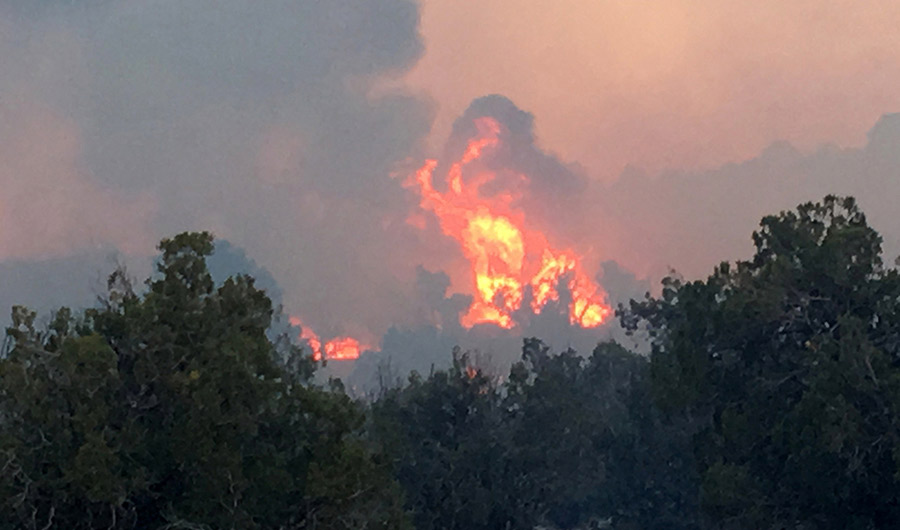BRIEF: Why Do We Need a National Smoke Health Warning System?
(Inside Science) -- Wildfires create smoke that can extend far beyond the boundaries of the glowing embers. This week, at a meeting of the American Meteorological Society in Seattle, a panel of experts discussed the growing need for a national smoke health warning system to communicate health risks from wildfire events to the public.
"Wildfires are the single biggest source of high-level air quality impacts in the U.S.," said Sim Larkin, a climate scientist based in Seattle, and the team leader for the U.S. Forest Service AirFire Team, which seeks to understand weather, climate air quality and wildland fire. "A single fire can significantly impact millions of people, and multiple regional fires can impact a large area of the country."
The loss of trees and the damage to homes from a fire are visibly evident, but the smoke from a fire can impact public health many miles away. "Wildfire smoke affects millions of people [in the U.S.]," said A. R. Ravishankara, a professor of chemistry and atmospheric science at Colorado State University in Fort Collins.
One of the components of smoke is fine particulate matter called PM2.5. These particles are so small that they can get trapped inside the lung, causing a variety of respiratory problems from bronchitis to asthma.
Susan Stone, a senior environmental scientist with the U.S. Environmental Protection Agency in Washington, DC, explained the impact of fine particulates from a variety of pollution sources on public health in the United States. "In 2005, over 100,000 premature deaths were associated with PM2.5," Stone said. "There were 180,000 nonfatal heart attacks."
Sonia Kreidenweis, a professor of atmospheric science at Colorado State University, stressed the interconnected roles of U.S. agencies including the Forest Service, the EPA, the CDC, the National Oceanic and Atmospheric Administration, along with the private sector.
"It is so important for the various groups involved to communicate with each other and with the public," she said.
Sources like AirFire, NOAA and the National Weather Service already have many of the pieces that would make up a wildfire smoke warning system, including instruments to monitor PM2.5 in real time during a wildfire event and models to predict the size and path of fires and the smoke they produce. Even though the creation of a national smoke health warning system is only in the beginning stages, there was much interest and enthusiasm from both the panelists and session attendees that this idea just might become part of the public's weather alerts in the near future.


